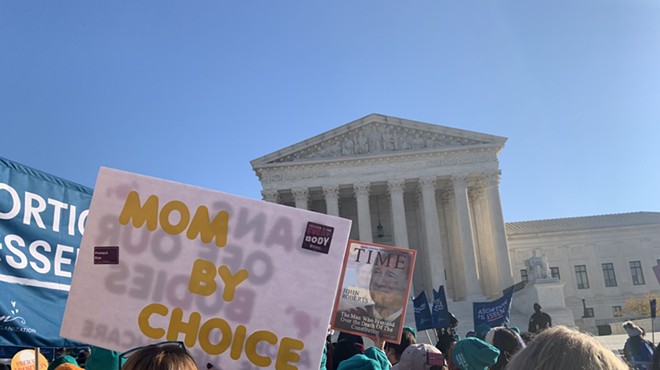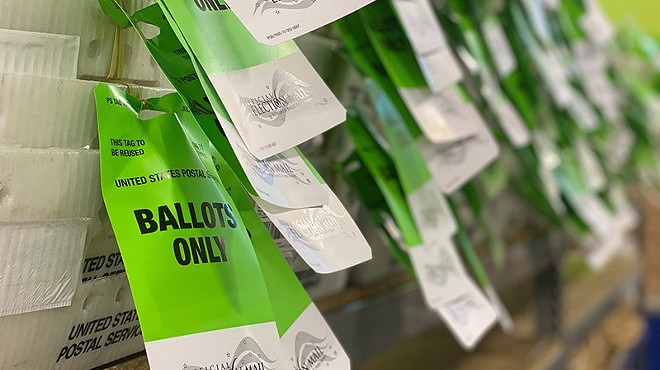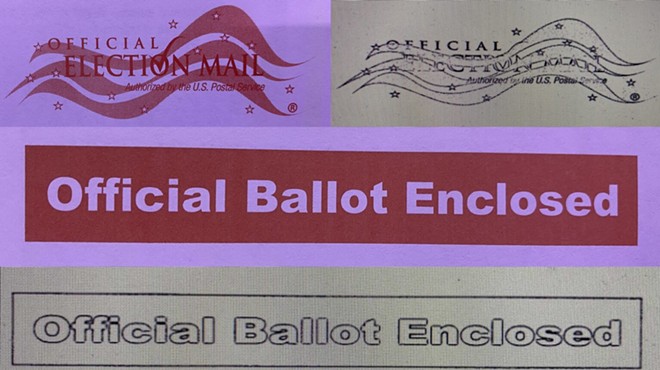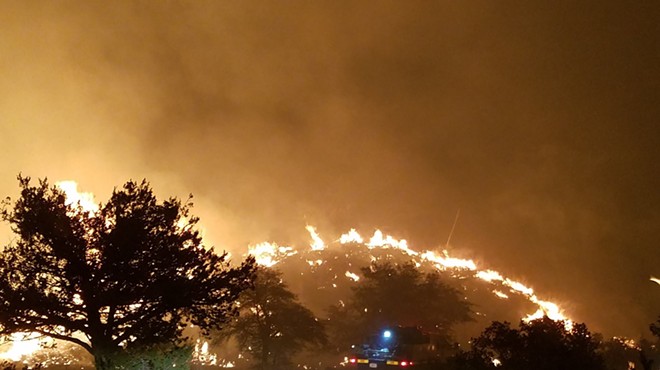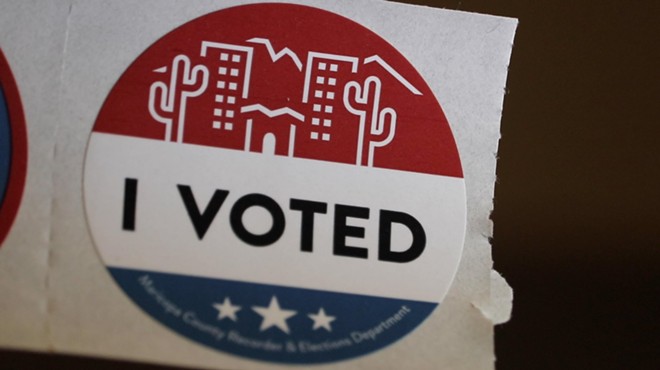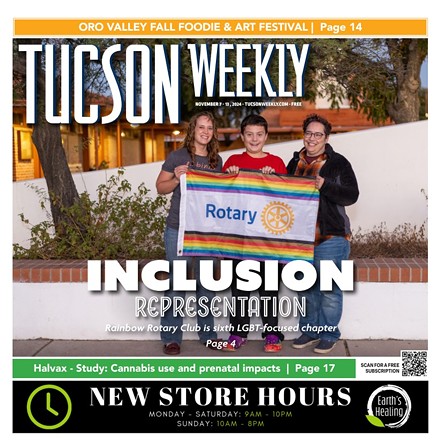Monday, November 1, 2021
Arizona draft maps approved: 4 competitive congressional seats, 6 legislative districts

Four of Arizona’s congressional districts would be competitive, with two as legitimate toss-up seats, under a new draft map adopted Thursday by the Arizona Independent Redistricting Commission. Republicans would have three safe seats and Democrats would have two.
And the commission’s official draft legislative map would give Republicans more safe districts, but give Democrats a chance to win control at the legislature in the right year.
After weeks of sometimes acrimonious debate, the AIRC approved its official draft maps of the congressional and legislative districts that Arizona will use for the next decade. But the maps, while a major milestone in the redistricting process, are far from final: The commission must now submit them for 30 days of public review, which includes meetings across the state, before it comes back and approves the final versions.
Under the metrics adopted by the commission to measure competitiveness, which is based on the results of nine statewide races in 2016, 2018 and 2020, two of the proposed legislative districts would be toss-up seats where either party could win in a given year.
In Legislative District 2, which covers much of the north Phoenix area between Northern Avenue and Loop 101, Democrats have an advantage of just 3.3%. The AIRC considers anything within 7% to be competitive, and anything within 4% to be highly competitive. The numbers are even closer in District 4, which runs from south Scottsdale to the Loop 101 west of Scottsdale Road, and leans toward the Democrats by just half a percentage point.
Four other districts fall under the range of competitiveness, two leaning toward each party. Republicans have 13 safe legislative districts and Democrats have 11.
Two congressional districts are considered highly competitive. The 6th Congressional District, composed of northern and eastern Tucson, Cochise County and parts of Graham Greenlee and Pinal Counties, would have a Democratic advantage of just 1.9%. A similar predecessor district, which has been the most competitive in the state for the past decade, is currently represented by Democrat Ann Kirkpatrick, who is retiring, leaving an open race for her seat.
The new 1st Congressional District, taking in Scottsdale and much of north and central Phoenix, would have a Democratic lean of just 1.6%. U.S. Reps. David Schweikert, a Republican, and Greg Stanton, a Democrat, both live in the district. However, the new seat would cover much of the area in the solidly GOP district Schweikert currently represents.
Ahwatukee, Tempe, west Mesa and parts of Chandler and Gilbert, which are largely in Stanton’s current district, would be in the new 4th Congressional District, which has a Democratic advantage of 5.6%. And Republican U.S. Rep. Debbie Lesko’s southwest Valley-based seat is getting much less safe for the GOP, with a Republican edge of only 4.1%.
Wrangling over Pima County legislative districts
Both plans received unanimous approval, though it was a difficult road to that point for the legislative map.
Southern Arizona has been the flashpoint for disagreement for much of the past week, with Democratic Commissioner Shereen Lerner and Republican Commissioner David Mehl pushing their respective visions for the legislative map.
Last week, the commission incorporated seven southern Arizona legislative districts supported by the Southern Arizona Leadership Council, a Tucson-based business group that Mehl is a founding member of. The Arizona Mirror later learned that the proposed map was submitted to the AIRC by an official with the Pima County Republican Party.
The biggest source of friction was the proposed District 17. Mehl has long prioritized putting Marana and Oro Valley in the same legislative district, and the proposal he supported extended that district across the Santa Catalina Mountains into the Tanque Verde region east of Tucson, down to Vail in the south.
Lerner objected that the district’s two population centers would be completely separated by the mountains, forcing people to drive for up to an hour through other districts to traverse it from end to end. She also disliked that the proposal turned District 17 from a competitive district into a safe Republican one.
Both issues would have been solved by Lerner’s proposal to add Casas Adobes and the Catalina Foothills in the northern Tucson area to District 17.
However, Mehl wouldn’t budge on joining Marana and Oro Valley with Tanque Verde, nor would he support removing Vail from District 17.
“That’s the suburban ring around Tucson. It’s a very similar development, very similar lifestyle,” said Mehl, a Tucson Republican.
Lerner argued that District 17 was being drawn for partisan purposes, while Mehl questioned why she was bothered by a lack of competitiveness in one Tucson area Republican district but not three others that would be solidly Democratic.
SALC President and CEO Ted Maxwell told Mehl and independent Chairwoman Erika Neuberg that he liked the way the proposed map ensured that at least one safe district for each party would be wholly or mostly contained in Pima County. That would ensure that no matter which party controls the legislature — Republicans have had almost unbroken control since the 1960s — SALC would be able to turn to a Pima County lawmaker from the majority party.
Neuberg supported that goal, arguing on Thursday that Republican-leaning residents in the Tucson area could be marginalized otherwise.
“From my perspective, I’m hearing that you’re getting hung up by one district,” Neuberg told Lerner. “I’m comfortable having a district that will ensure that right-of-center people will have some representation.”
Neuberg told Lerner that she was inclined to support the map backed by Mehl and Republican Commissioner Doug York. But after voting with Mehl and York on the map they preferred, she offered to give Lerner and fellow Democratic Commissioner Derrick Watchman more time to find a compromise before approving it as the official legislative draft map. However, she warned that she would vote with their Republican colleagues if they couldn’t reach one.
“If we don’t agree on a starting point, are we going to agree on an ending point?” she asked.
All agree: More work to be done
That compromise came when the commissioners agreed on a map that kept the southern Arizona districts favored by Mehl, but made changes Lerner wanted in Maricopa County. Specifically, Lerner asked that the Sunnyslope area of Phoenix and the North Mountain Preserve be moved from central Phoenix-based District 1 into District 2 to the north. District 1, in turn, was extended to Papago Park.
“I’m still not happy. To be very honest, what happened in the Tucson area I do not feel comfortable with at all,” Lerner told reporters after the meeting. “Was there a compromise? We got one district modified in Maricopa County. They got a district modified in Pima County.”
One thing both sides agreed on was that they wanted to see big changes to the legislative map before it gets final approval.
“I think clearly that Maricopa County has a lot of work to be done,” Mehl said after the meeting.
Lerner said she will continue to push for a proposal by the Arizona Latino Coalition for Fair Redistricting to extend District 21, which runs from southern Tucson to Nogales, eastward along the Mexican border to pick up areas like Agua Prieta and Bisbee.
“I think there’s a lot of room for change still, and I think we all know that,” Lerner told reporters.
Public input set to begin next month
As has been the case for much of the past two weeks, there was far less disagreement on the congressional map. The one major change in the map was in Democratic Congressman Ruben Gallego’s new 3rd Congressional District, which now extends out from south and west Phoenix into central Peoria.
The commissioners already have changes in mind, however. Neuberg, for example, said she wanted to address concerns raised by Tucson Mayor Regina Romero, who asked that the University of Arizona and its surrounding area be moved fully into the 7th Congressional District.
Lerner said there are still a lot of changes needed in the congressional districts, as well, but said the commissioners were probably in agreement on 60% of the map.
“Now we need to hear from the public so that we know that, whatever we’re thinking, it may be that the public thinks differently,” she said.
Though she still had no shortage of issues with the map, Lerner praised Neuberg’s work in helping guide the commission to a compromise.
“She’s setting a good example by saying, let’s see if we can find a way to get together. And I’m appreciative of that because I know that past commissions have not had that,” she said.
Arizona Mirror is part of States Newsroom, a network of news bureaus supported by grants and a coalition of donors as a 501c(3) public charity. Arizona Mirror maintains editorial independence. Contact Editor Jim Small for questions: info@azmirror.com. Follow Arizona Mirror on Facebook and Twitter.




